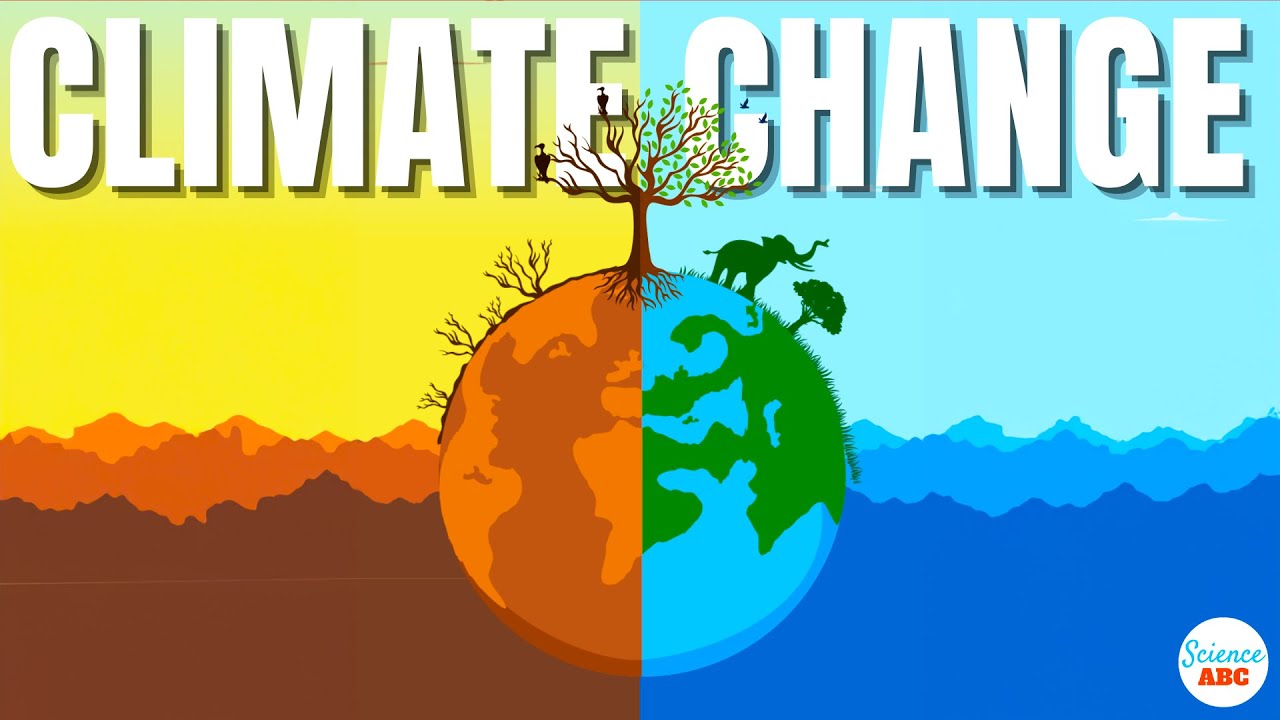Is our climate headed for a mathematical tipping point? - Victor J. Donnay
Summary
TLDRThis script explains how a minor increase in Earth's temperature, akin to a small change in billiards table shape, can lead to chaotic climate effects. It draws a parallel between the predictable motion of a billiard ball on a circular table and Earth's climate stability under certain CO2 levels. However, as CO2 levels rise, we approach a tipping point where small temperature increases can result in unpredictable, intense weather events, posing a threat to human life.
Takeaways
- ⚠️ A 2°C increase in Earth's temperature might seem minor but can lead to severe global consequences.
- 🌡️ Scientists warn that rising CO2 levels could push Earth's climate past a tipping point into unpredictable chaos.
- 🎱 The concept of a mathematical tipping point is explained using the game of billiards as an analogy.
- 📐 In billiards, a small change in the table's shape can cause the ball's motion to shift from predictable to chaotic.
- 🌐 The Earth's climate system, like the billiards table, can change from stable to chaotic with minor alterations in constraints like CO2 levels.
- 🔄 The past 10,000 years have seen a relatively stable climate due to low CO2 levels, but this is changing.
- 📈 Current CO2 levels are at 400 parts per million, with predictions of a rise to 500-800 ppm, which could trigger a climate tipping point.
- 🌪️ A tipping point in climate could result in extreme weather, reduced predictability, and conditions less suitable for human life.
- 🧮 Mathematical models, though abstract, provide insights into how small changes can have significant real-world impacts.
- ⏰ It's crucial to understand and predict these dangers before they become visible and potentially irreversible.
Q & A
What is the significance of a 2-degree Celsius increase in Earth's temperature?
-A 2-degree Celsius increase may seem small, but scientists warn it can lead to catastrophic effects worldwide due to the potential for reaching a mathematical tipping point, causing unpredictable changes in climate patterns.
How does the concept of a mathematical tipping point relate to climate change?
-A mathematical tipping point is a threshold beyond which a small change can lead to significant and unpredictable changes in a system. In climate change, this could mean that once certain CO2 levels are reached, even minor temperature increases could cause drastic and chaotic climate effects.
What is the analogy used in the script to explain the concept of a tipping point?
-The script uses the game of billiards on a circular table to explain tipping points. When the table is altered by adding straight edges, the predictable motion becomes chaotic, illustrating how small changes can lead to drastic changes in behavior.
Why does the ball on the billiard table follow a predictable pattern initially?
-The ball follows a predictable pattern because it is operating under stable conditions with no friction and a consistent shape of the table, which allows for regular, repeatable motion.
What happens to the ball's motion when the table's shape is altered?
-When the table's shape is altered by adding straight edges, the ball's motion becomes chaotic and unpredictable, even though it still follows the basic rules of billiard motion.
How does the script suggest we can predict the ball's path on a billiard table?
-The script suggests that with a few test runs and basic mathematical modeling, one can predict the ball's path based on its starting conditions, assuming no friction and a perfectly circular table.
What does the CO2 level represent in the analogy of the billiard table's shape?
-In the analogy, the CO2 level is represented by the shape of the billiard table, which acts as a constraint that impacts the system's performance, similar to how CO2 levels impact Earth's climate.
What was the CO2 concentration in the atmosphere during the past 10,000 years, and why was it significant?
-The CO2 concentration was around 270 parts per million, which kept the climate within a self-stabilizing pattern that was regular and hospitable to human life.
What are the predicted CO2 levels for the coming century, and what concerns do they raise?
-CO2 levels are predicted to rise to between 500 and 800 parts per million, which raises concerns about reaching a tipping point that could lead to more extreme weather events, less predictability, and a climate less hospitable to human life.
How can hypothetical mathematical models help us understand real-world problems?
-Hypothetical models provide a framework and way of thinking that can be applied to complex real-world problems, helping us understand how slight changes in constraints can have massive impacts and predict potential dangers.
What is the importance of understanding the tipping point concept in relation to climate change?
-Understanding the tipping point concept is crucial because it gives us a greater appreciation for predicting the dangers of climate change that we might not immediately perceive with our senses, and it emphasizes the urgency of acting before the effects become irreversible.
Outlines

هذا القسم متوفر فقط للمشتركين. يرجى الترقية للوصول إلى هذه الميزة.
قم بالترقية الآنMindmap

هذا القسم متوفر فقط للمشتركين. يرجى الترقية للوصول إلى هذه الميزة.
قم بالترقية الآنKeywords

هذا القسم متوفر فقط للمشتركين. يرجى الترقية للوصول إلى هذه الميزة.
قم بالترقية الآنHighlights

هذا القسم متوفر فقط للمشتركين. يرجى الترقية للوصول إلى هذه الميزة.
قم بالترقية الآنTranscripts

هذا القسم متوفر فقط للمشتركين. يرجى الترقية للوصول إلى هذه الميزة.
قم بالترقية الآنتصفح المزيد من مقاطع الفيديو ذات الصلة

Is the weather actually becoming more extreme? - R. Saravanan

Climate Change | Global Warming | Greenhouse Effect | Grade 9 Science Quarter 3 Week 6 Lesson

NASA | This World Is Black and White

Climate Change and Global Warming: Explained in Simple Words for Beginners

The Psychology of Climate Change | Shanlea Tabofunda | TEDxYouth@TorreAve

Climate Change 101 with Bill Nye | National Geographic
5.0 / 5 (0 votes)
